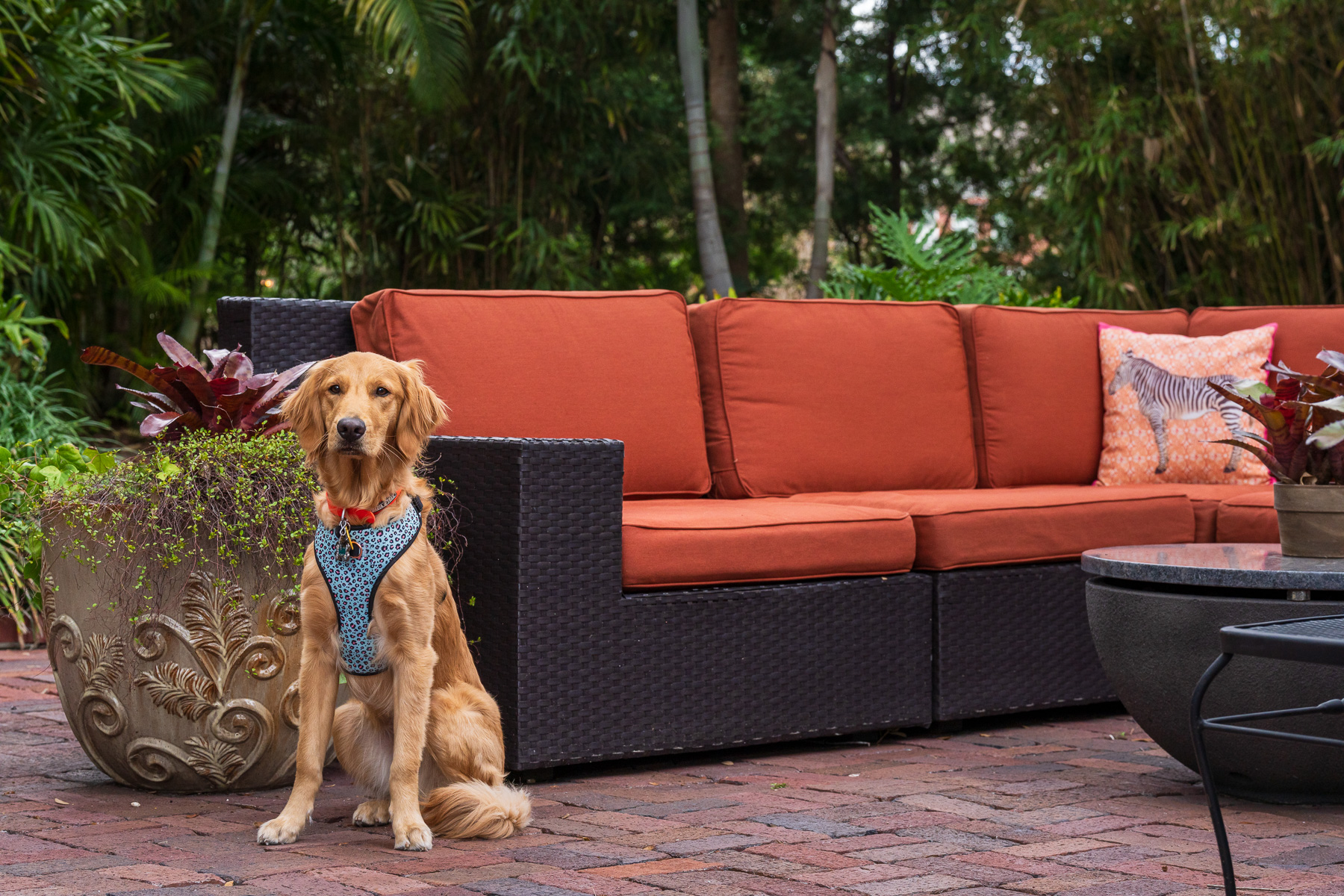
Plants to Avoid For Your Tampa Bay HOA That Are Toxic to Dogs
 Michael Tomaino
Michael Tomaino
Every HOA property manager and board member dreams of a breathtaking landscape that exudes curb appeal and makes residents beam with pride. In the Tampa Bay area, this vision of beauty is always within reach, thanks to Florida’s welcoming climate and standard of exceptional landscapes.
There is more to creating an idyllic HOA property than appearances, though. It needs to be functional and account for residents, visitors, and even their furry friends. This means making strategic choices when it comes to both the design of the landscape and the plants that will populate it.
Because not all plants are friendly to pets–particularly dogs–avoiding plants toxic to dogs is a must. While an experienced local landscaper will be able to help you identify poisonous plants for dogs in Florida, having some foundational knowledge of the topic can help you keep the pets of your community safe.
Safe Landscaping for Pets - What You Need to Know
An HOA community should be a safe haven for people and pets alike. It’s easy to imagine toxic plants to dogs as being exotic or rare, but they are shockingly common in the Tampa Bay area. Some of them may even be personal favorites thanks to their classic good looks and landscaping potential.
Thankfully, most of these troublesome plants have alternatives that are just as beautiful and versatile, allowing your HOA property to thrive without the possibility of harming those lovable canine companions.
Aloe Vera
It may be renowned for its various medicinal properties and unique appearance, but aloe vera does not have a place in safe landscaping for pets. While it can be applied to pets topically in certain situations, it is toxic for dogs to eat. If a dog consumes too much aloe vera, it can experience digestive distress. It typically isn’t deadly, but the dehydration following the reaction can be dangerous.

Lilies
They may be beautiful, but lilies are on every list of poisonous plants for dogs in Florida. You may see sources claiming that some lilies are non-toxic to dogs, but it is better to be safe than sorry. Varieties like Lily of the Valley, Peace Lily, and Gloriosa Lily are among those that can cause dogs serious harm.
Sometimes, symptoms may be as mild as a small stomach ache, but they can also be severe to the point of fatality. When in doubt, it’s best to avoid incorporating lilies into your HOA landscaping plan. If you are going to use them, do so in an area that is not accessible to dogs.

Sago Palms
As one of the most popular trees in Florida, sago palms can be seen gracing landscapes all around the Tampa Bay area. Also called cycads, every part of these plants is toxic to dogs, making them particularly dangerous. The seeds are particularly toxic, and even a single seed can cause death in dogs.
If you are an HOA manager or board member, and your community has dogs, it is best to avoid sago palms entirely.

Azaleas
Another popular plant in Florida that is unsafe for dogs is azalea. These flowering shrubs are undeniably beautiful, especially when they erupt in vibrant blossoms, but they are among the plants toxic to dogs. Azaleas contain grayanotoxin, which is a potent neurotoxin. If ingested, it can lead to a host of health problems for dogs, including severe issues like cardiovascular and nervous system disruption.
Unfortunately, even a small amount of azalea can wreak havoc on a dog’s health if it is ingested, making these hardy shrubs off-limits for HOA communities that are dog-friendly.

Philodendron
While this plant may provide a rich textural element to any landscape, it is among the poisonous plants for dogs in Florida. Typically, philodendron is not deadly for dogs, but it can still be quite harmful. It irritates the mouth, stomach, and skin of canines, causing them distress and pain. So, while it may not be as potent as other plants on this list, it should be avoided in areas that are heavily trafficked by dogs.

Chrysanthemums
Consisting of various flowering plants, including daisies and mums, chrysanthemums are a popular pick in the Tampa Bay area thanks to the pop of vibrancy they can bring to a landscape. However, chrysanthemums contain pyrethroids, which make them a no-go when creating safe landscaping for pets.
Ingestion of this plant by a dog can cause serious issues, including a host of symptoms that range from coughing to an absence of appetite. While the prognosis for recovery is generally okay–especially if the poisoning is caught and treated early–chrysanthemums should not be included in an HOA landscape design that dogs will frequent.

Oleander
Thanks to its hardiness in the face of drought and heat, oleander is a popular flowering shrub that graces gardens in Florida. While not native to the Sunshine State, this plant has managed to spread in the wild, as well–a testament to its strong adaptability.
While oleander is beautiful thanks to its colorful blossoms, every part of the plant is toxic to dogs (and humans, for that matter). Even a small amount of the plant can be lethal if ingested, making oleander particularly deadly. Because of its potency, it is best to avoid this plant altogether when populating your HOA property.

Spotted Water Hemlock
It is unlikely that your HOA landscape will intentionally include spotted water hemlock, but it is a plant to be on the lookout for nonetheless. Because it thrives naturally in wet areas, including ditches and retention ponds, it is possible for this plant to pop up in or around your HOA community.
Spotted water hemlock is one of the most poisonous plants for dogs in Florida. It contains cicutoxin, which is a poison that affects the nervous system. Even people–adults and children alike–can experience fatal poisoning if they eat this plant. If you spot this plant, which is often mistaken for wild carrot, alert your landscaping professional and have it removed as soon as possible.

Safe Landscaping for Pets - Alternatives to Dangerous Plants
There are many Florida plants toxic to dogs, but there are also plenty of safe, beautiful alternatives that can give your HOA community the curb appeal you crave. For example, crape myrtles bring an unmistakable burst of color, jasmine provides visual texture, camellias are the perfect ornamental shrubs, and magnolia trees are the standard for stately flowering trees.
Better still, your local landscaper can suggest a multitude of non-poisonous plants for dogs in Florida, giving you a large selection to choose from. Together, you can create an idyllic HOA community that fits an aesthetic vision while providing people–and their pets–a safe place to live.

To learn more about plants toxic to dogs, how to avoid them, and wonderful alternatives to these treacherous plants, be sure to contact your trusted landscaping professional. With over 20 years of experience in the Tampa Bay area, Landcrafters has the knowledge to help you on your quest to establish an idyllic Florida landscape for your HOA property and its pets.
Sources: Aloe Vera, Lillies, Sago Palms, Azaleas, Philodendron, Chrysanthemums, Oleander, Spotted Water Hemlock

Michael Tomaino
Head Gardener for Landcrafters, Inc. Michael Tomaino, a cornerstone of Landcrafters since its inception, oversees all aspects of business operations with a wealth of experience. With years of adept team management and leadership under his belt, coupled with a robust educational background, both within and beyond the industry, Michael is dedicated to steering Landcrafters towards becoming the foremost landscape management provider in the Tampa Bay Area.

